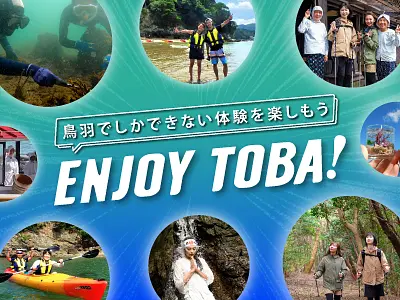Mie Prefecture is full of famous mochi eaten by IseJingu worshipers! Introducing the recommended specialty mochi of “Mochi Kaido”
掲載日:2024.01.30

IseJingu has welcomed many tourists who come to Ise Shrine since the Edo period. It is said that travelers from all over the country who headed for Ise liked to eat rice cakes that were quick and filling while on the way.
The Sangu Kaido from Kuwana to Ise is also known as the ``Mochi Kaido'', and along the road there is a famous mochi that was popular as a food on the way to entertain travelers on ``Okage Mairi'', and you can still enjoy it at many shops today. can.
You can enjoy a different kind of trip to Mie by tasting rice cakes from all over the highway and thinking about the traveling habits of people back then.
index
Akafukumochi (IseCity)
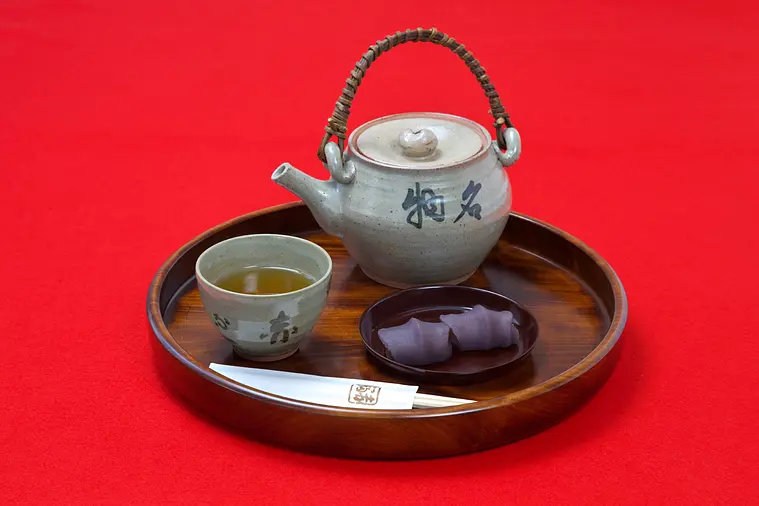
The restaurant is an old-fashioned gabled building with a gold sign that says it was founded in Hoei 4, and the large red stove in front of the store has an elegant appearance, and the traditional taste has been preserved to this day. The white mochi represents pebbles at the bottom of the river, and the three stripes on the bean paste represent the clear streams of the Isuzu River. The name comes from the word 'Akashin Keifuku'. (Akashin means sincerity, Keifuku means rejoicing in happiness)
Related information
Interview report: What is “Tsuitachi-Mochi” that can only be purchased on the first day of every month at Akafukumochi? ? Introducing the charms of Okage-yokocho Yokocho for a day, such as morning porridge and morning market!
Interview report: Akafuku is Akafukumochi souvenir from Ise! It goes without saying that there are many things we didn't know about this well-known Ise specialty, including its 300-year history and manufacturing methods.
Interview report: Feel the coolness from the sweetness. Introducing IseCity Prefecture's summer specialty shaved ice "AkafukuIce" and Isuzu Chaya's summer limited cafe menu
Nikenjaya-Mochi (IseCity)
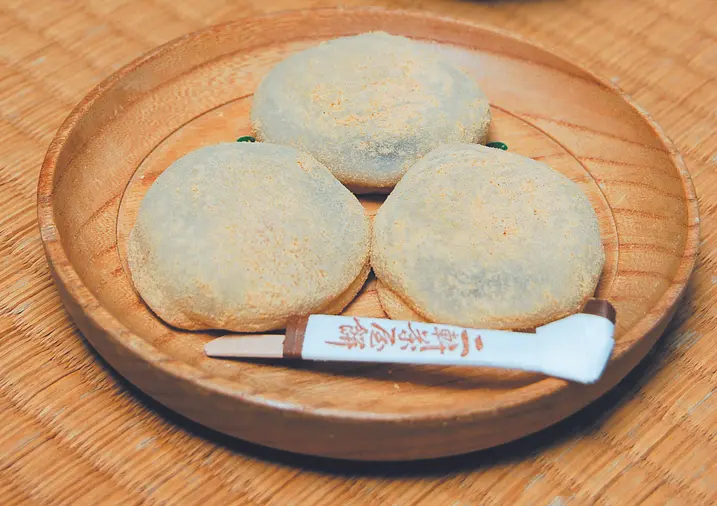
A thin rice cake filled with azuki bean paste and sprinkled with soybean flour. This rice cake was born at the boat dock for people visiting the shrine by boat. On the 25th of every month, brown sugar bean mochi will be sold for a limited time.
Related information
Interview report: Experience a history-filled food culture tour at Nikenjaya-Mochi!
Henba-Mochi (IseCity)
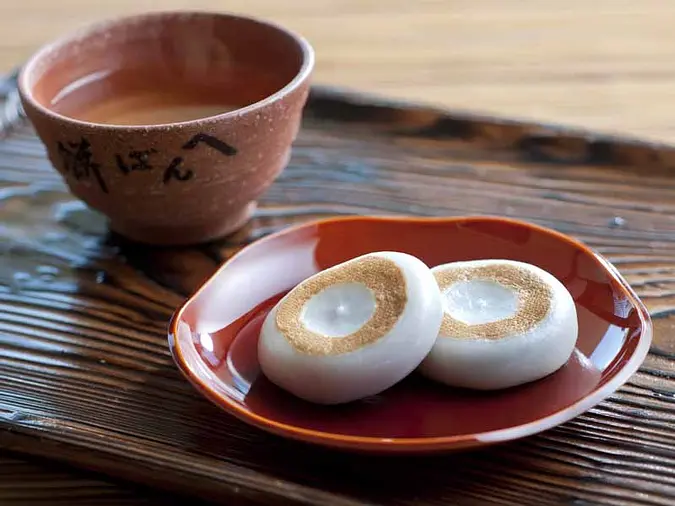
It is called Henba (return the horse) mochi because the shrine visitors returned their horses in front of the Miyagawa ferry. A long-established Japanese confectionery store that has been around for over 200 years since its founding along the approach road. This rice cake is made by wrapping strained red bean paste in a dango skin made by steaming fine grained fresh flour, and has a sweet and fragrant grilled texture.
Related information
Taikoshusse-Mochi (IseCity)
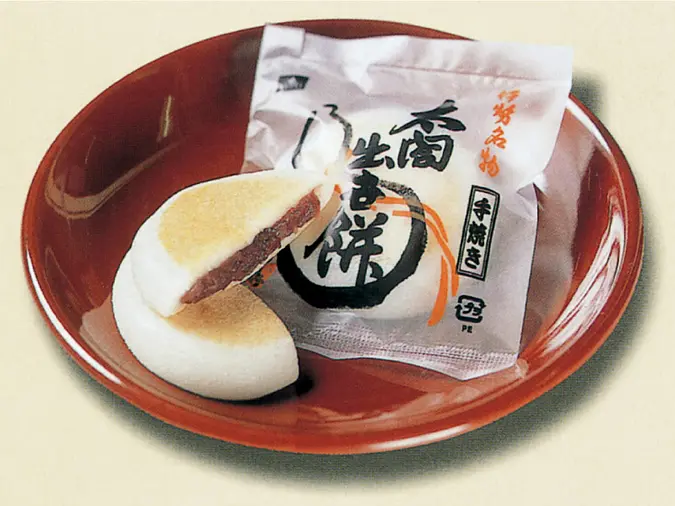
Taikoshusse-Mochi'' is a freshly made mochi made with sweet red bean paste that has been cooked to an elegant sweetness, giving it a light brownish appearance. The name comes from the fact that Hideyoshi, the ruler of Japan, praised it as ``delicious.'' You can enjoy rice cake while drinking tea, making it the perfect place to take a break from walking. This is a little-known spot located just a short distance from the approach to the shrine, right near Naiku UjibashiBridge.
Related information
Kamiyo-Mochi (IseCity)
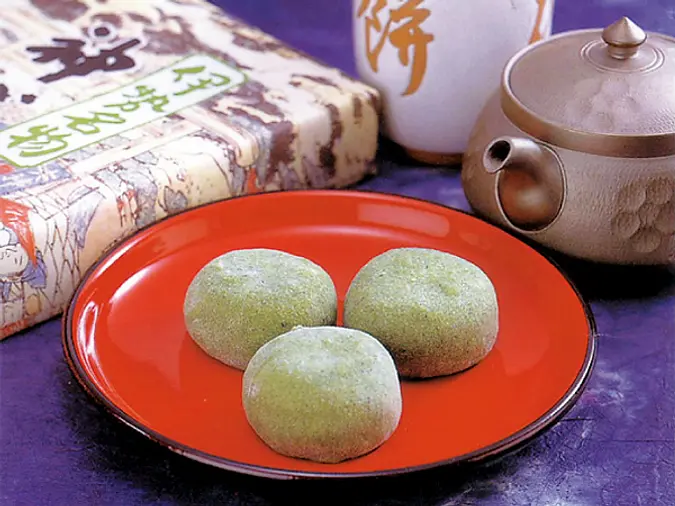
A bite-sized rice cake made with natural mugwort and filled with moderately sweet crushed red bean paste.
Kamiyo-Mochi, which has a refreshing herbaceous aroma, is an authentic Kusa Mochi made using only natural mugwort for its color and aroma and without using any additives.
Related information
Iwato Mochi (IseCity)
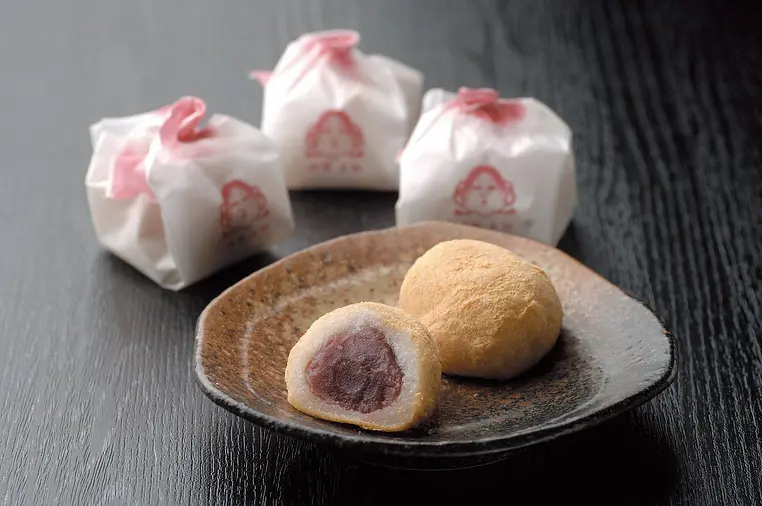
We have carefully crafted this piece in honor of the auspicious ancient event of Iwato Kagura, where Tencho Onna no Mikoto was danced in Japanese mythology. They are sold as Ise souvenirs at Iwatoya at the entrance to Oharai-Machi. A delicious rice cake made with azuki beans from Hokkaido and sprinkled with soybean flour.
Related information
Sawa-Mochi (ShimaCity)
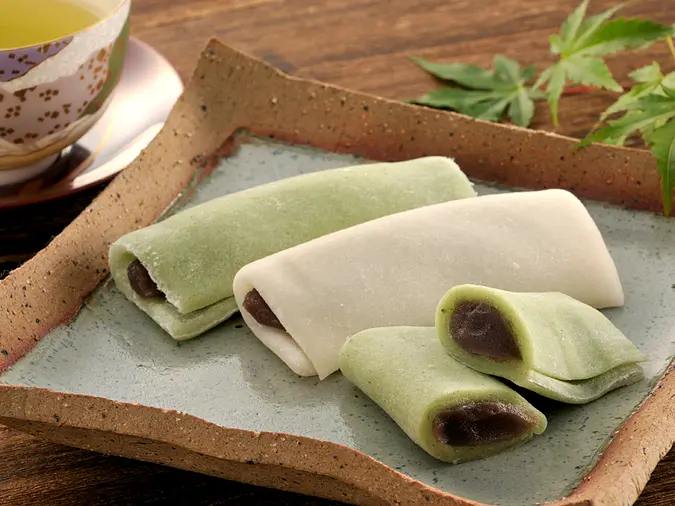
A famous confectionery made with strained red bean paste wrapped in soft mochi and boasting a subtle sweetness. It is quietly popular for its old-fashioned, simple taste.
Yasunaga-Mochi (KuwanaCity)
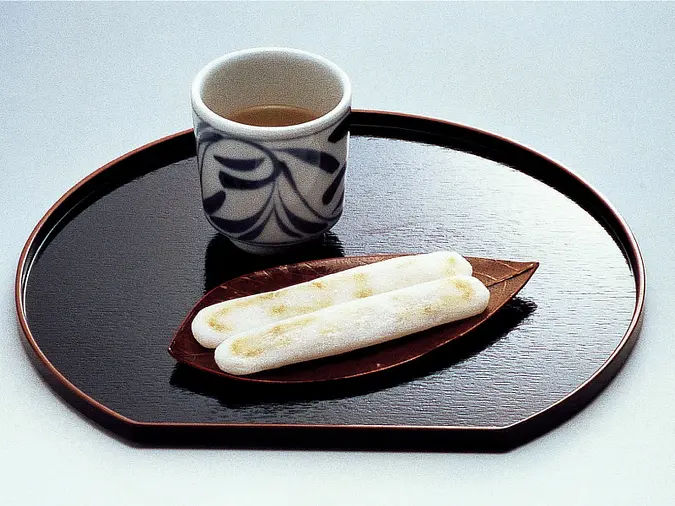
The rice cake is long and thin, filled with sweet bean paste, and has a slightly browned color. During the Edo period, the feudal lord of Kuwana conceived of shomochi as a food for emergencies, and since then, it has been improved to reach its current taste. No additives are added to the mochi, allowing you to enjoy its original flavor.
Naga-Mochi (YokkaichiCity)
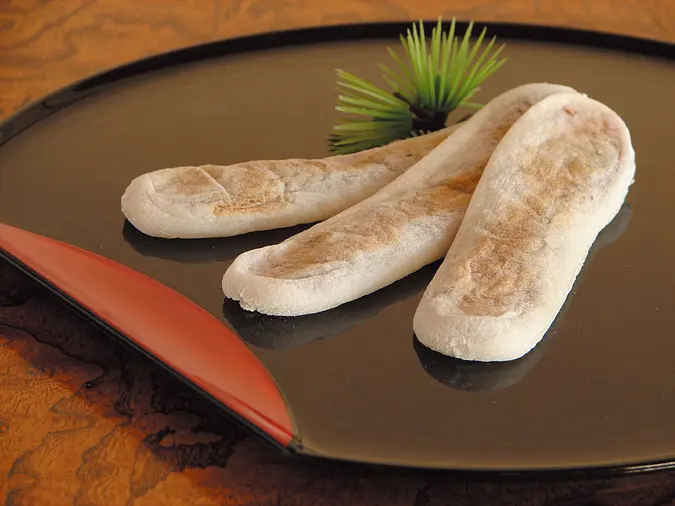
A mochi filled with red bean paste that is shaped like a cow's tongue. Both sides are lightly burnt, and they have been sold as souvenirs for Ise pilgrims since the Edo period.
Sekinoto (Fukagawa-ya Sekinoto Honpo) (KameyamaCity)
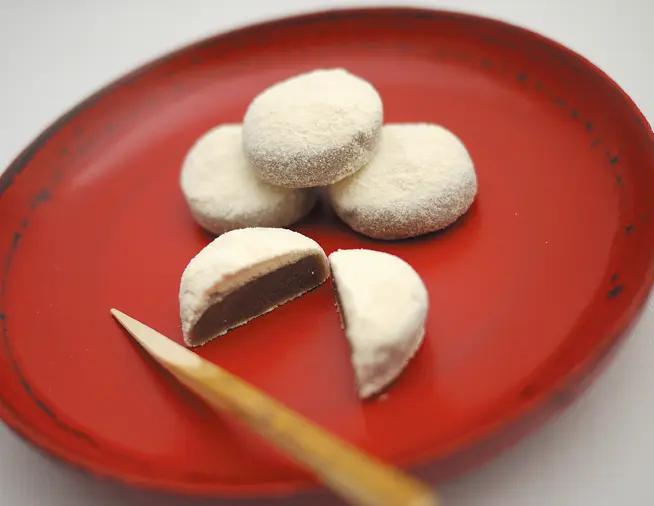
This mochi confectionery has been made in Sekijuku, the 47th post town of the 53 stations along Tokaido, for over 370 years. Sekinoto is a famous confectionery that was invented and continues to be made by the founder, Hattori Iyo Yasushige, in the Kanei era. It is a mochi confectionery made of red azuki bean paste wrapped in white gyuhi skin, and the top is sprinkled with Wasanbon, a specialty product of Awa. It is said that its appearance resembles the white snow that falls on the Suzuka mountain.
Related information
Shiradama (KameyamaCity)
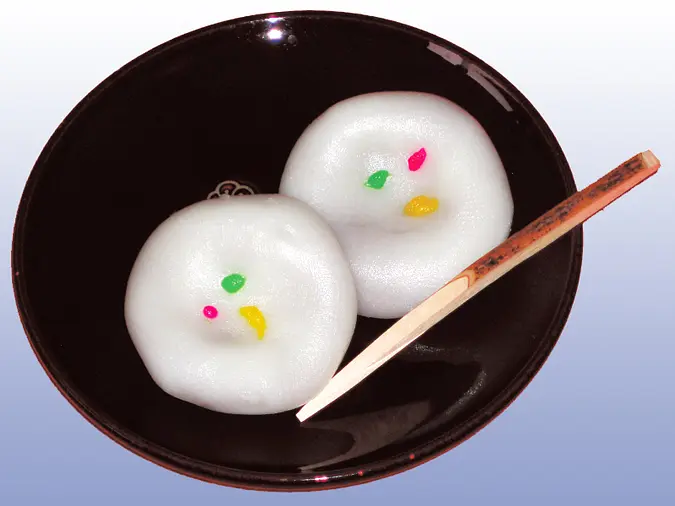
Miyake confectioner first created ``Shiradama,'' which is a popular mochi confectionery in the nearby area, and now Maedaya has developed a mochi confectionery that is popular as ``Shiradama.'' It is said that it was invented in the image of a magatama out of the three sacred treasures: swords, mirrors, and magatama.
Okin-Mochi (Taki Town TakiTown)
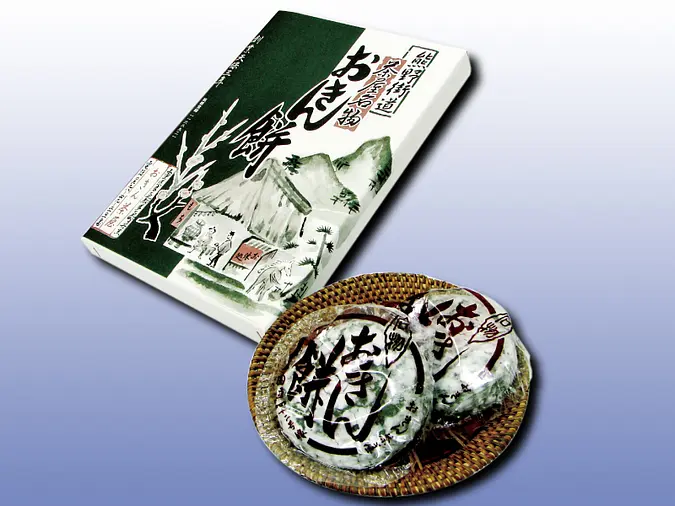
In the past, there was an old woman named Okin who lived at this teahouse, which was crowded with people visiting IseJingu Betsugu Shrine and its annex, Takihara Shrine. It became very popular among travelers taking a break and came to be called Okin-Mochi. It is popular for its silky soft texture.
| Category | |
|---|---|
| season | |
| area |














